PITTSFIELD — The meets certainly matter this time of year, but the athletes participating in them also know what it is they’re really training for.
Although the desire to win and post the best results possible is always great, it’s the end of the season, not late April, that has the attention of local track athletes. It’s those championship meets that they have in mind as they look to navigate these early-season competitions.
“You want to go out and do your best every time, but it’s definitely the end of the year that you want to be preparing for,” said Maine Central Institute junior jumper Wyatt DeGrasse. “You want to build it up toward the end so that you’re peaking at the right time.”
The end of the season comes quick in most high school spring sports. The Kennebec Valley Athletic Conference championships, for example, are only a month away, meaning the drive to the best at season’s end is already in full swing.
“We approach it that, if you get started sooner rather than later, you’ll get to those goals, possibly even sooner than the end of the season,” said Skowhegan thrower Emmah Corson. “That always shows, no matter how hard we start and how far we push ourselves.”
With such a compressed season, runners, jumpers and throwers engage in a balancing act as they try to improve without necessarily pushing their bodies to the limit just yet. Still, the buildup to those championships means training and competing the right way this time of year, something that makes this portion of the season all the more important.
It’s a time of year when athletes, regardless of sport, face many challenges. Those challenges begin with the climate; Maine’s winter thaw means conditions outdoors in early April are poor, and even with that thaw now complete, competitors are still battling rain and chilly weather on the track and in the field.
“As a thrower, you know that you usually aren’t to have the best measurements come from those meets,” said Heather Nelson, an MCI thrower, jumper and pole vaulter. “It’s tough, but you’ve just to layer up, battle through it mentally and hope for the best.”
Spending a lot of time indoors means athletes, especially those in field events, put in work in the weight room. Getting stronger is important for any athlete at any time of year, but it becomes even more of a focus when the limitations of being inside make lifting one of the few options available.

Monmouth Academy’s Nadiah Ruopp throws the discus during an April 21 track and field meet at the Ricky Gibson Field of Dreams in Readfield. Joe Phelan/Kennebec Journal
It’s a routine that, for the athletes who compete in both outdoor and indoor track, is a continuation of the winter season. They’re looking to better times and measurements from merely a couple months ago — and recently removed from one championship season, they’re already thinking about another.
“For indoor, indoor is like the preseason out to outdoor,” said Skowhegan junior Grace Greenlaw, who competes in the 400-meter dash, high jump, long jump and shot put. “When you get to outdoor, you start to turn up the gas, but you do it in a way where you don’t get injured.”
Greenlaw practiced exactly that Friday evening as Skowhegan competed in its first meet of the season at Messalonskee High School. Instead of running her usual 400, she competed in the 200 and ran, in her own words, “as fast as I was comfortable with going in 40-degree weather.”
MCI’s Emma Burr has a similar mindset. The junior is fresh off an indoor season in which she won state titles in the 200 as well as in the 55-meter hurdles, breaking school records in both of those events. As the outdoor season takes shape, though, she’s going with a more measured approach.

Maranacook’s Addie Watson wins her heat in the 100-meter dash during an April 21 meet in Readfield. Joe Phelan/Kennebec Journal
“I don’t go 100% in practices or anything because I don’t want to get hurt,” Burr said. “I’m very preventative; if anything hurts even a little bit, I’ll go see the trainer and make sure nothing’s wrong. … You don’t want to be going as hard as you are toward the end.”
DeGrasse, also wary of early-season injuries, said he often chooses to “sacrifice a jump here or there” this time of year in order to avoid them. He also takes a few other measures to make sure his body can withstand some of the risks posed by competing in jumping events.
“It’s definitely a lot of after-practice icing my legs and stretching a lot to make sure that I’m not injured,” DeGrasse said. “Injuries come a lot with the triple jump, high jump and long jump, so I definitely do a lot of icing and wearing a knee brace or compression socks to make sure my legs are healthy.”
Send questions/comments to the editors.


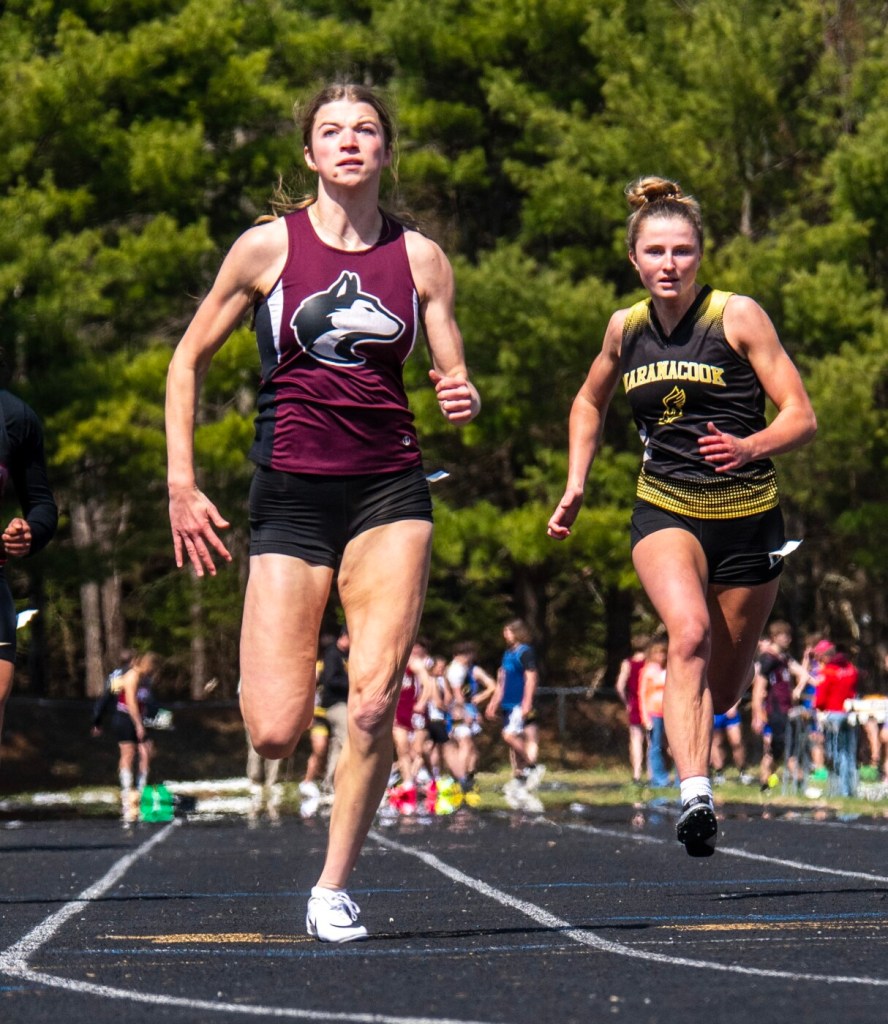
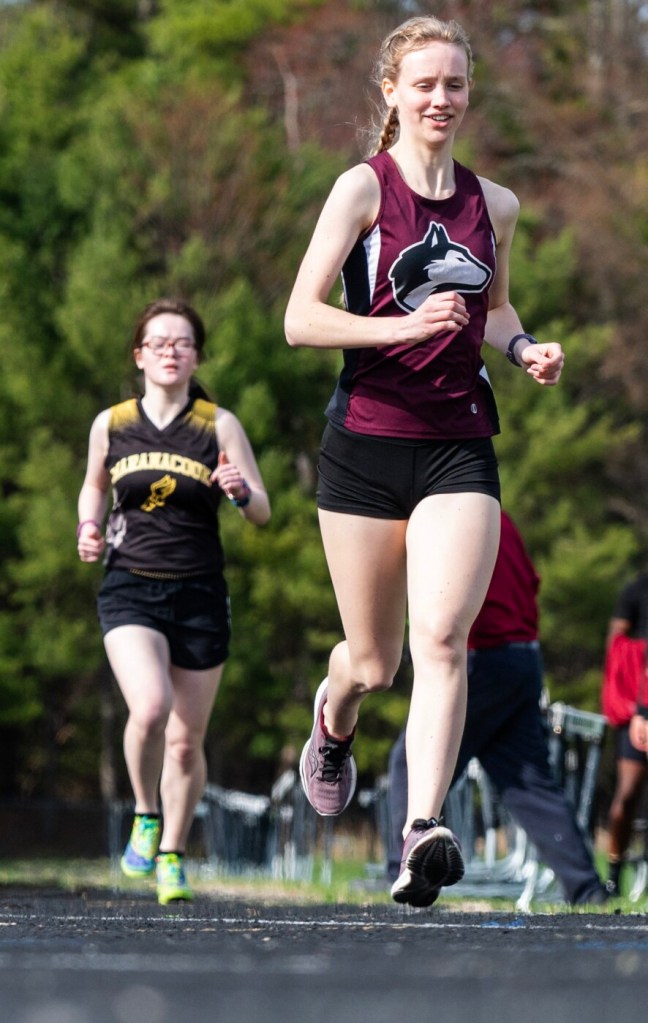
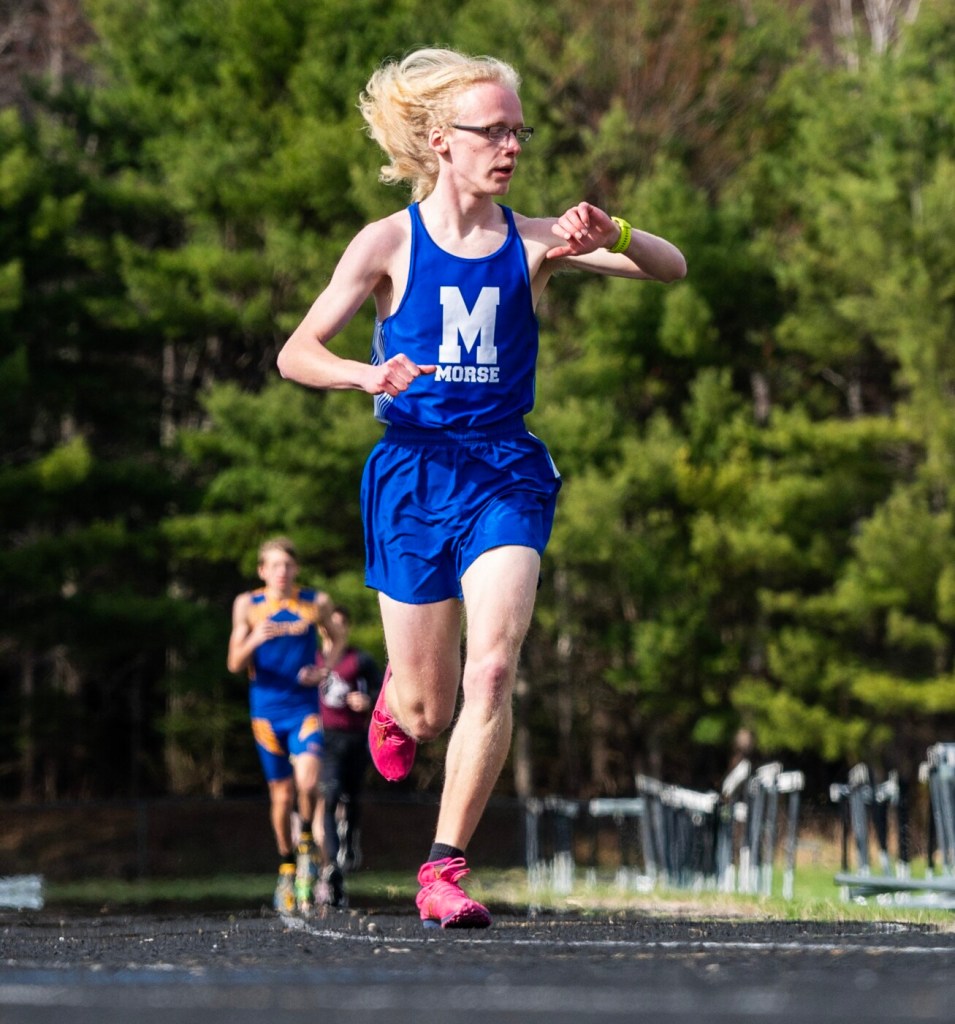
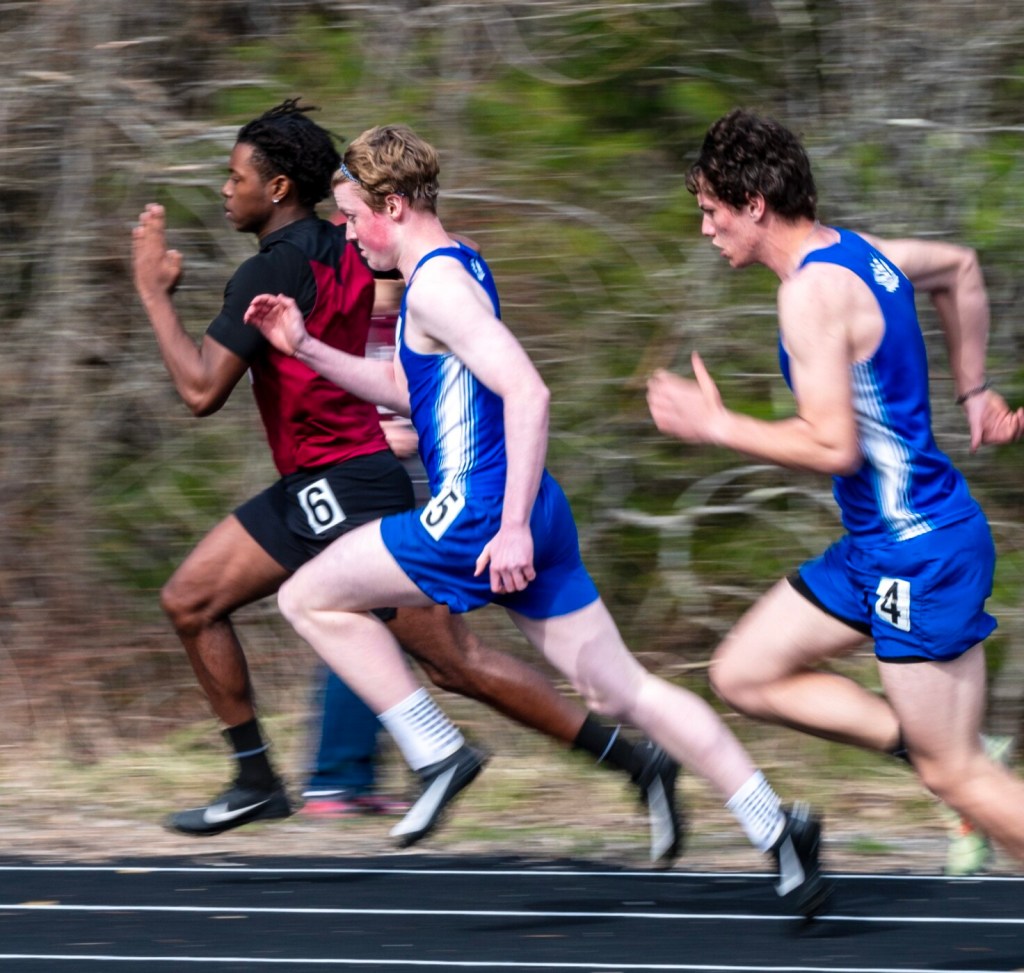
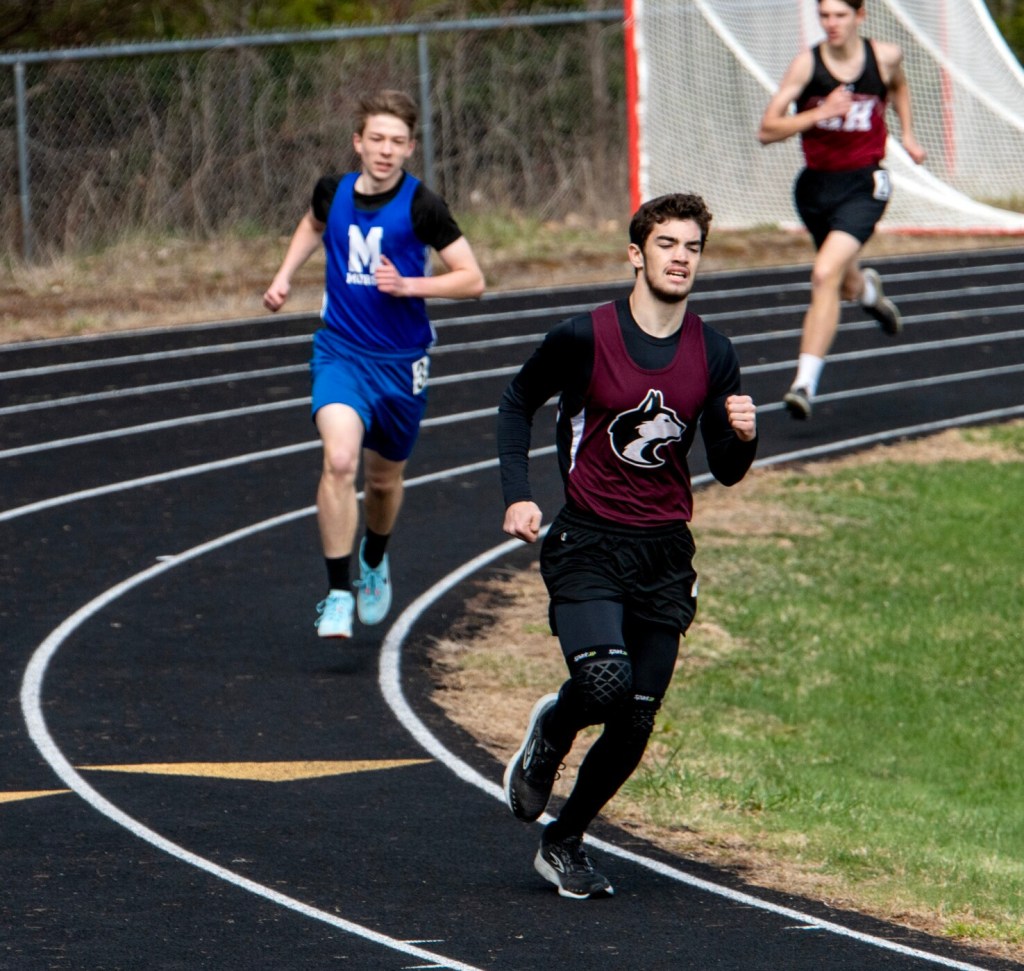
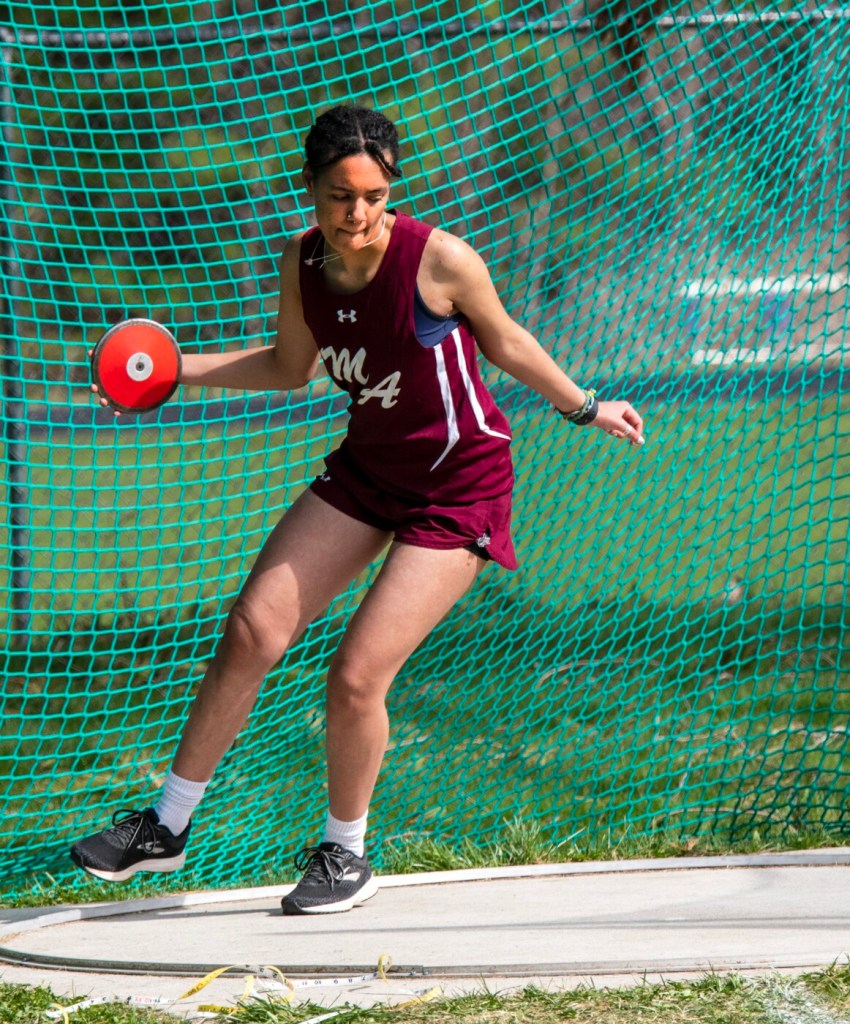
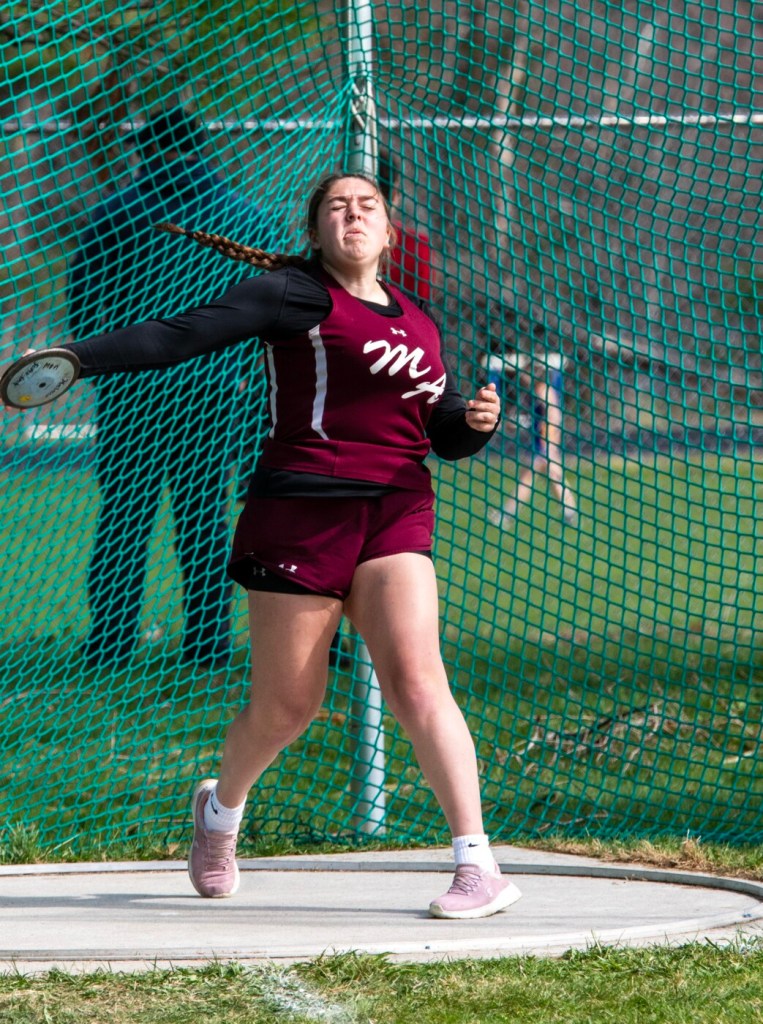
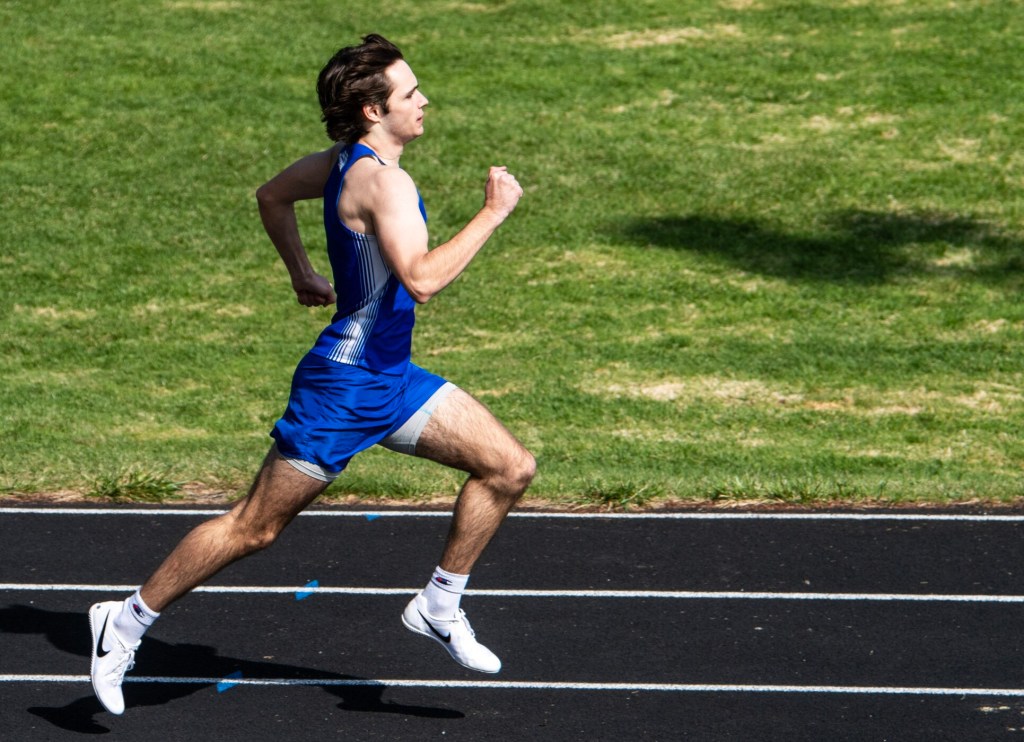
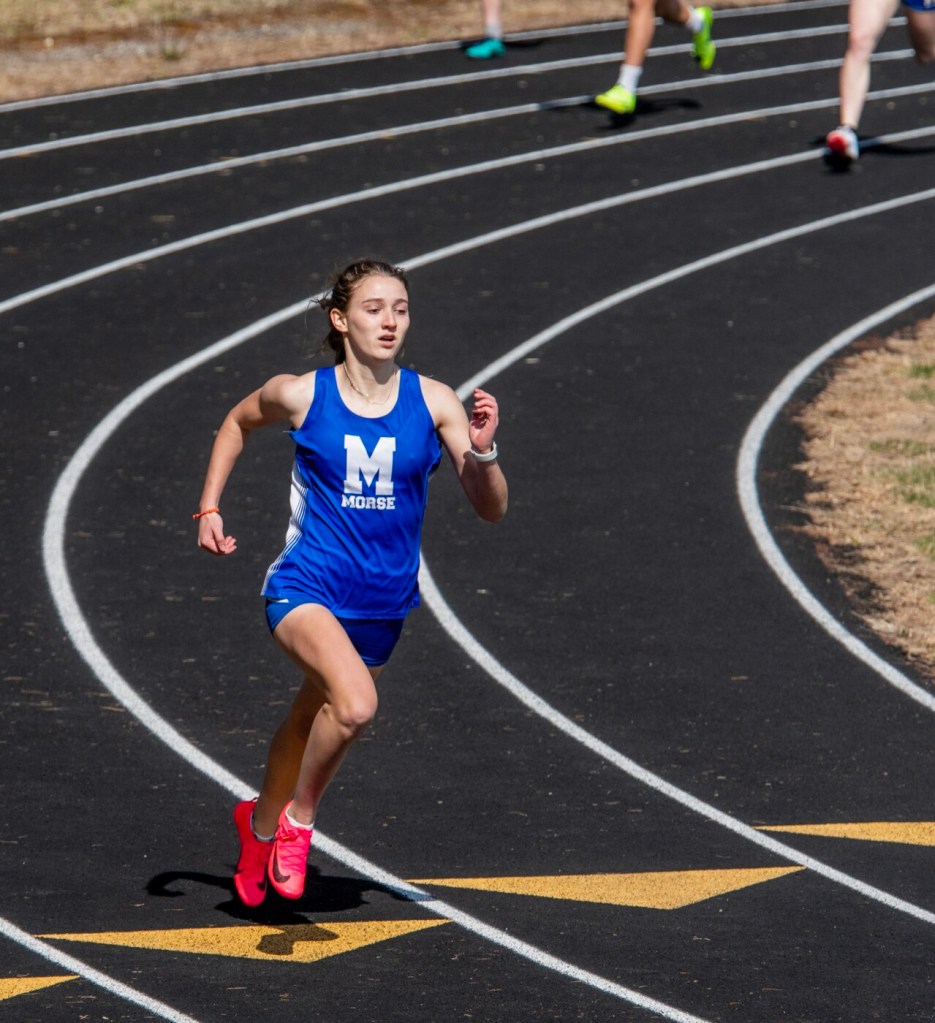
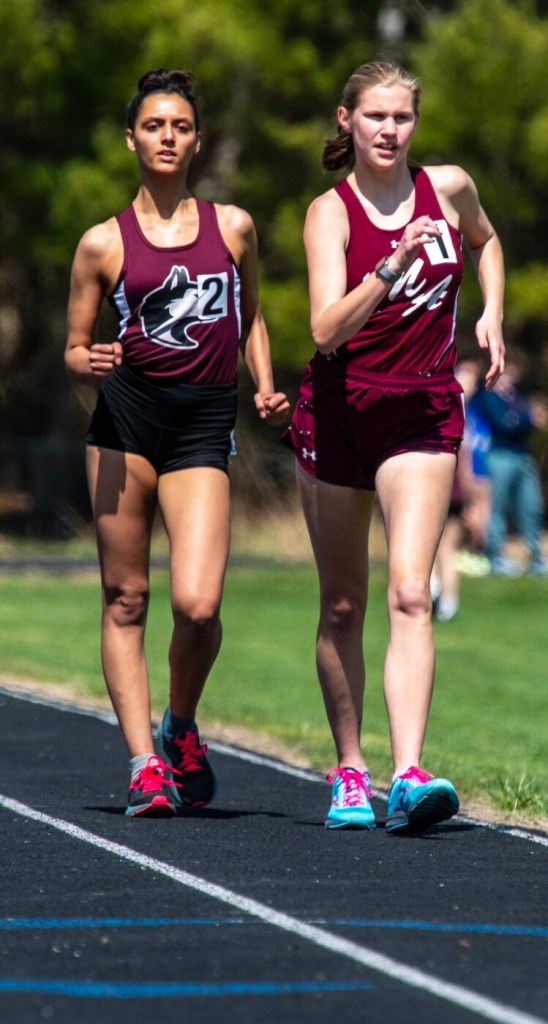
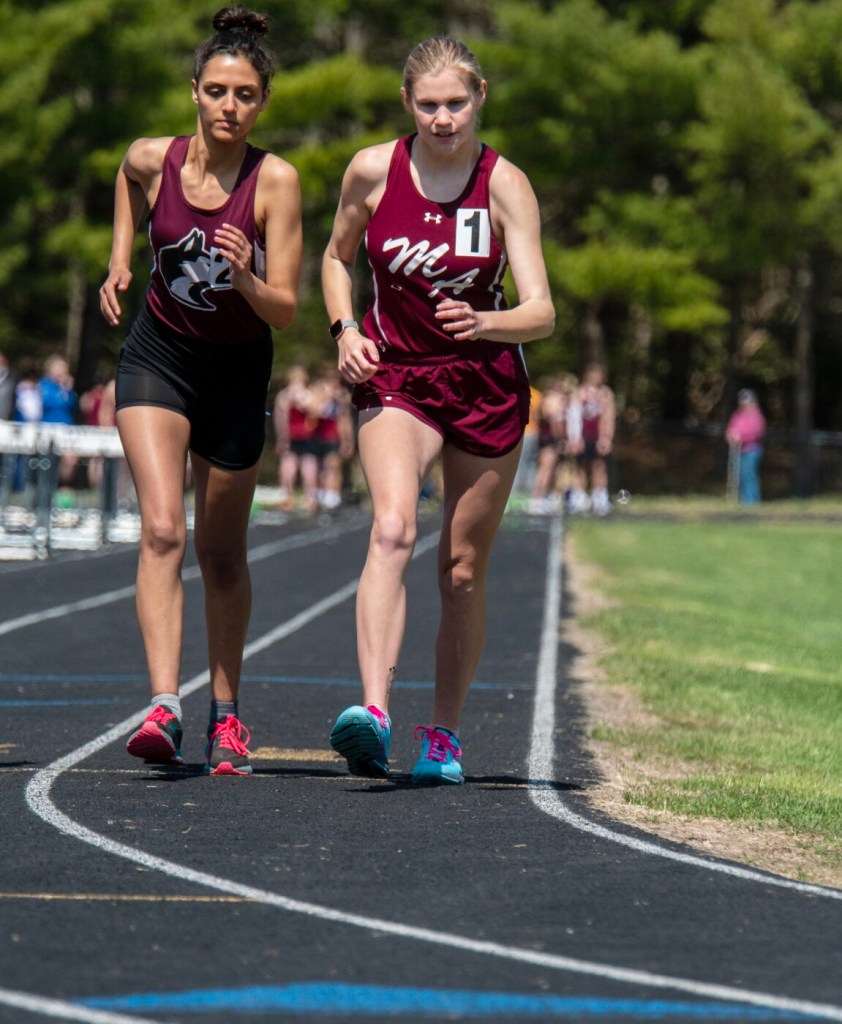
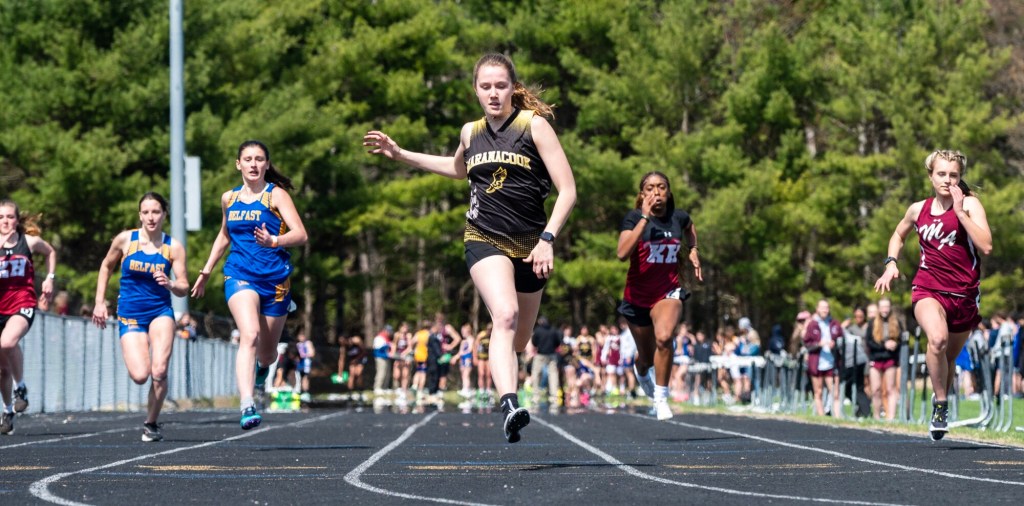
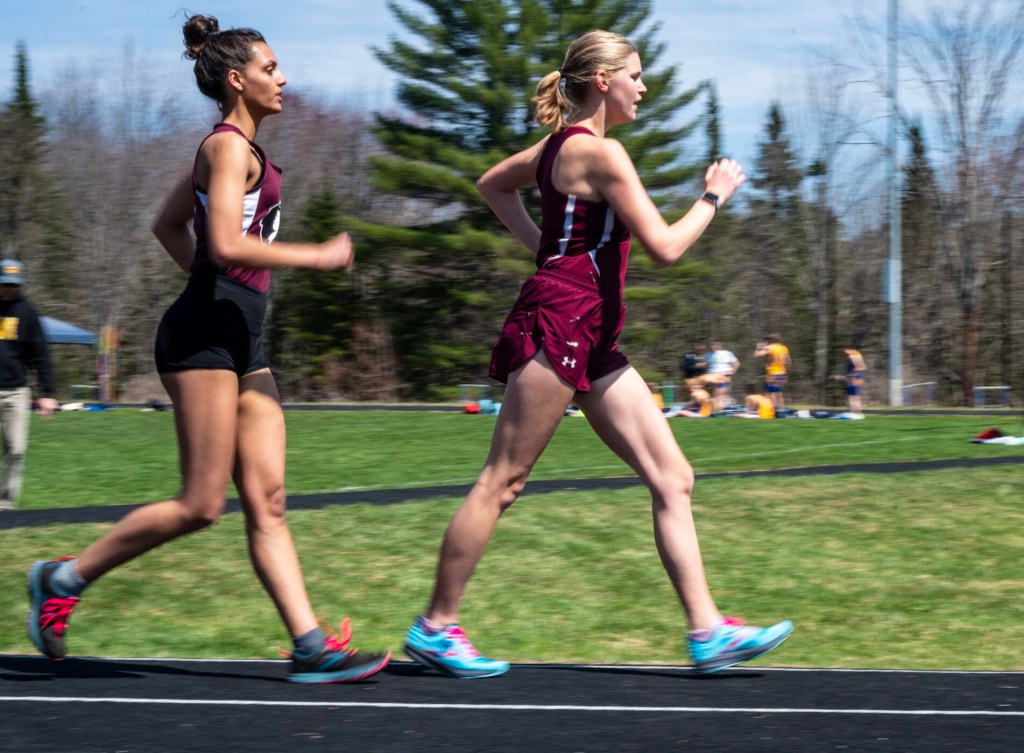

Success. Please wait for the page to reload. If the page does not reload within 5 seconds, please refresh the page.
Enter your email and password to access comments.
Hi, to comment on stories you must . This profile is in addition to your subscription and website login.
Already have a commenting profile? .
Invalid username/password.
Please check your email to confirm and complete your registration.
Only subscribers are eligible to post comments. Please subscribe or login first for digital access. Here’s why.
Use the form below to reset your password. When you've submitted your account email, we will send an email with a reset code.